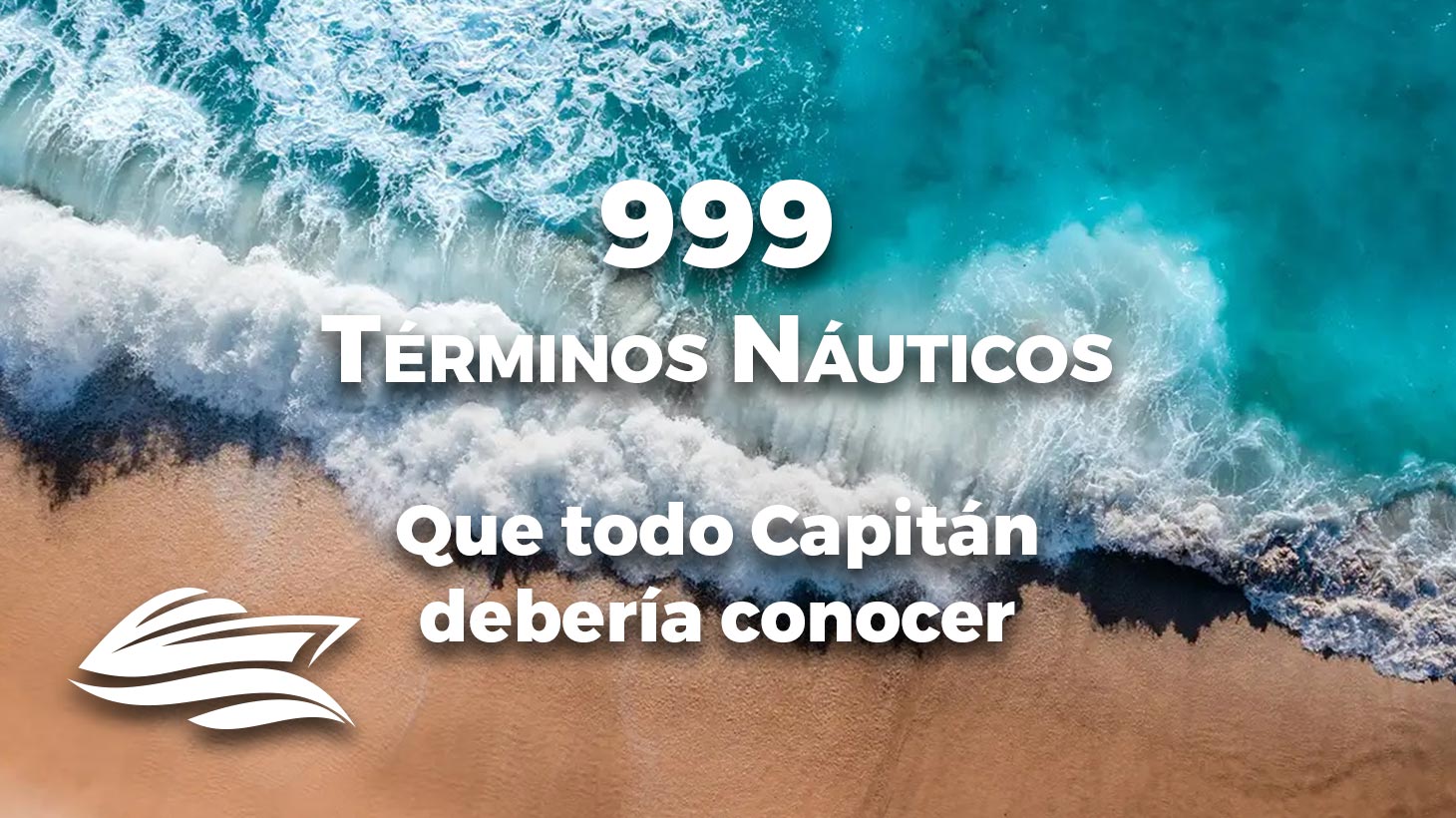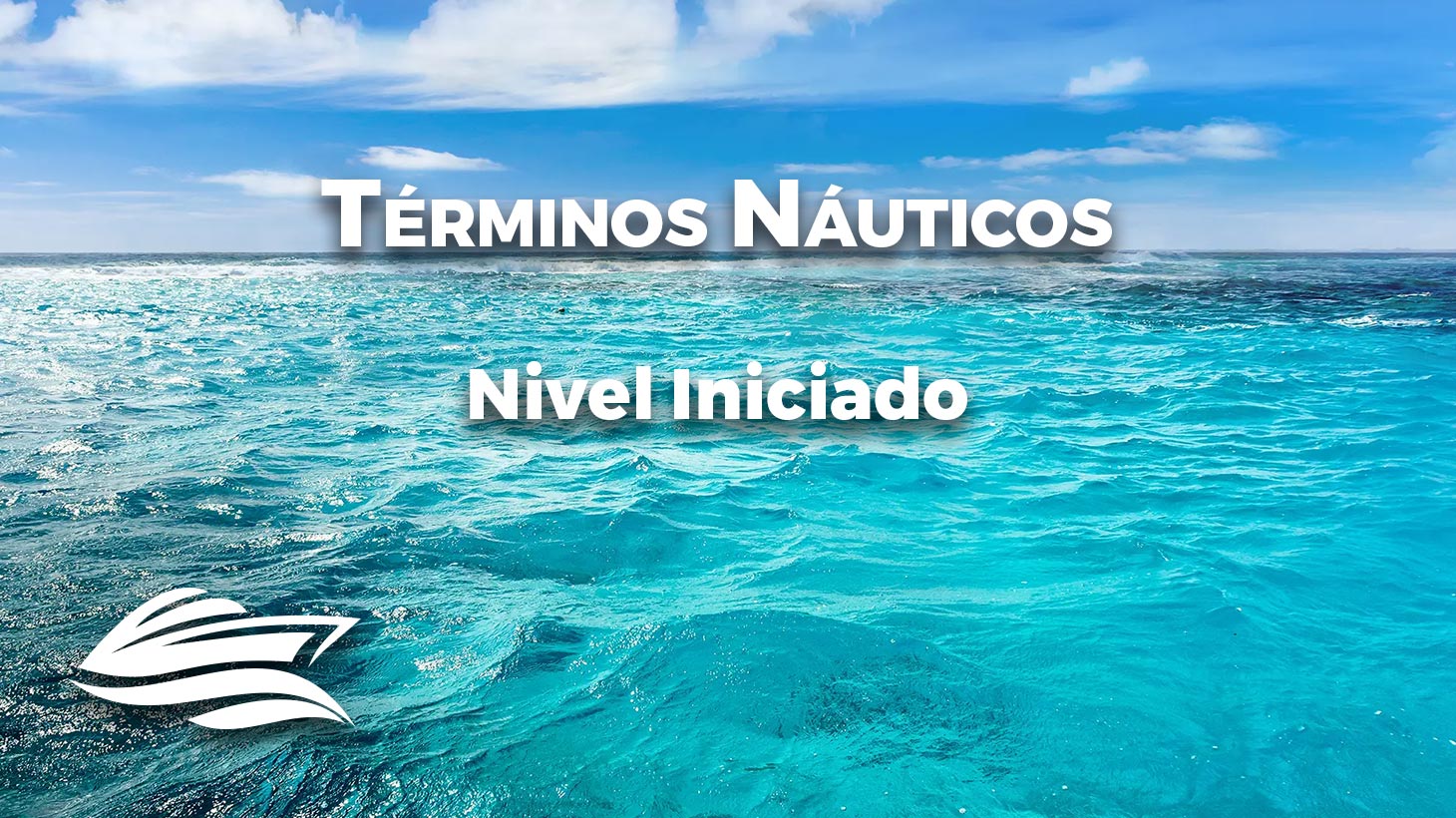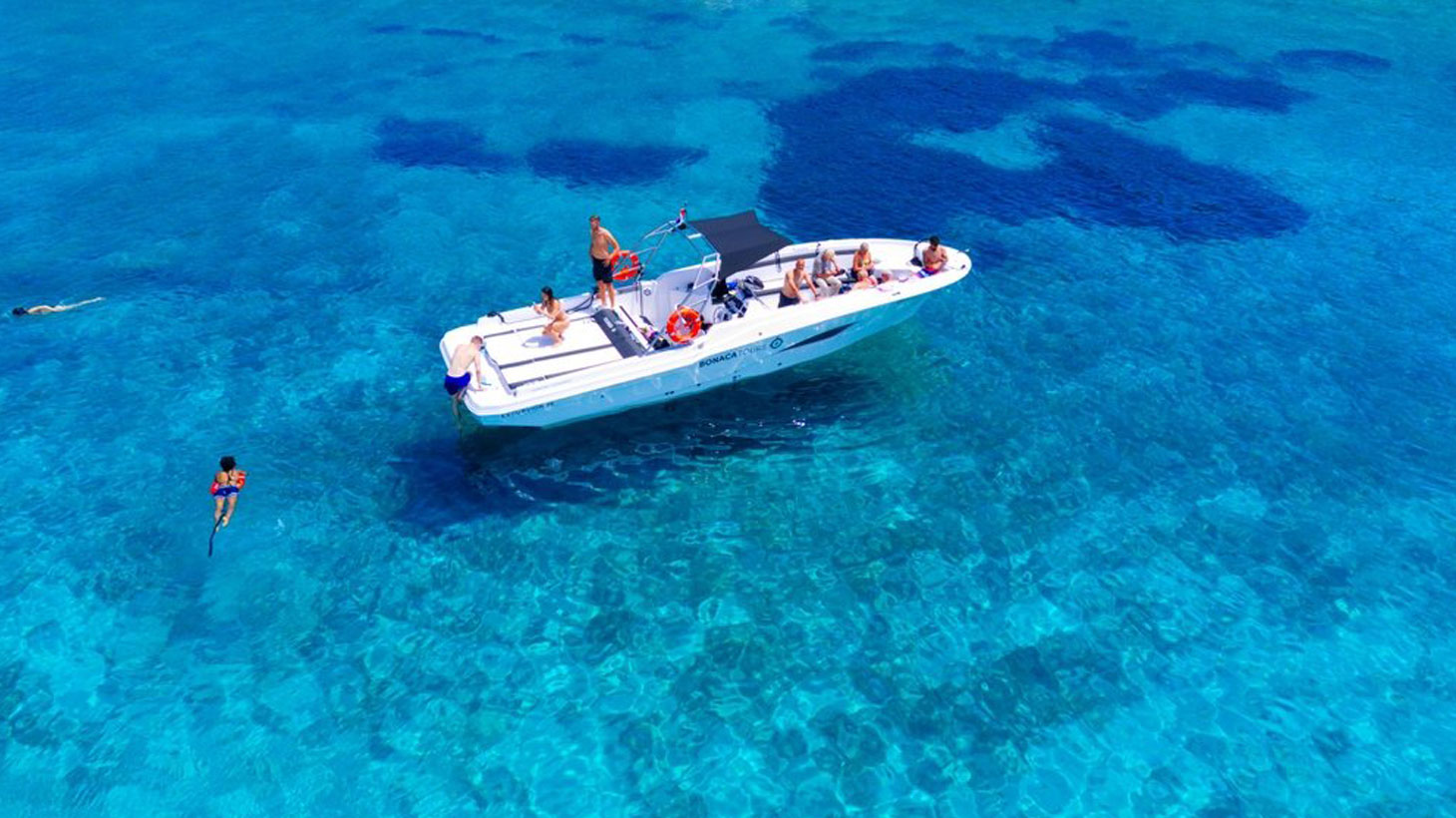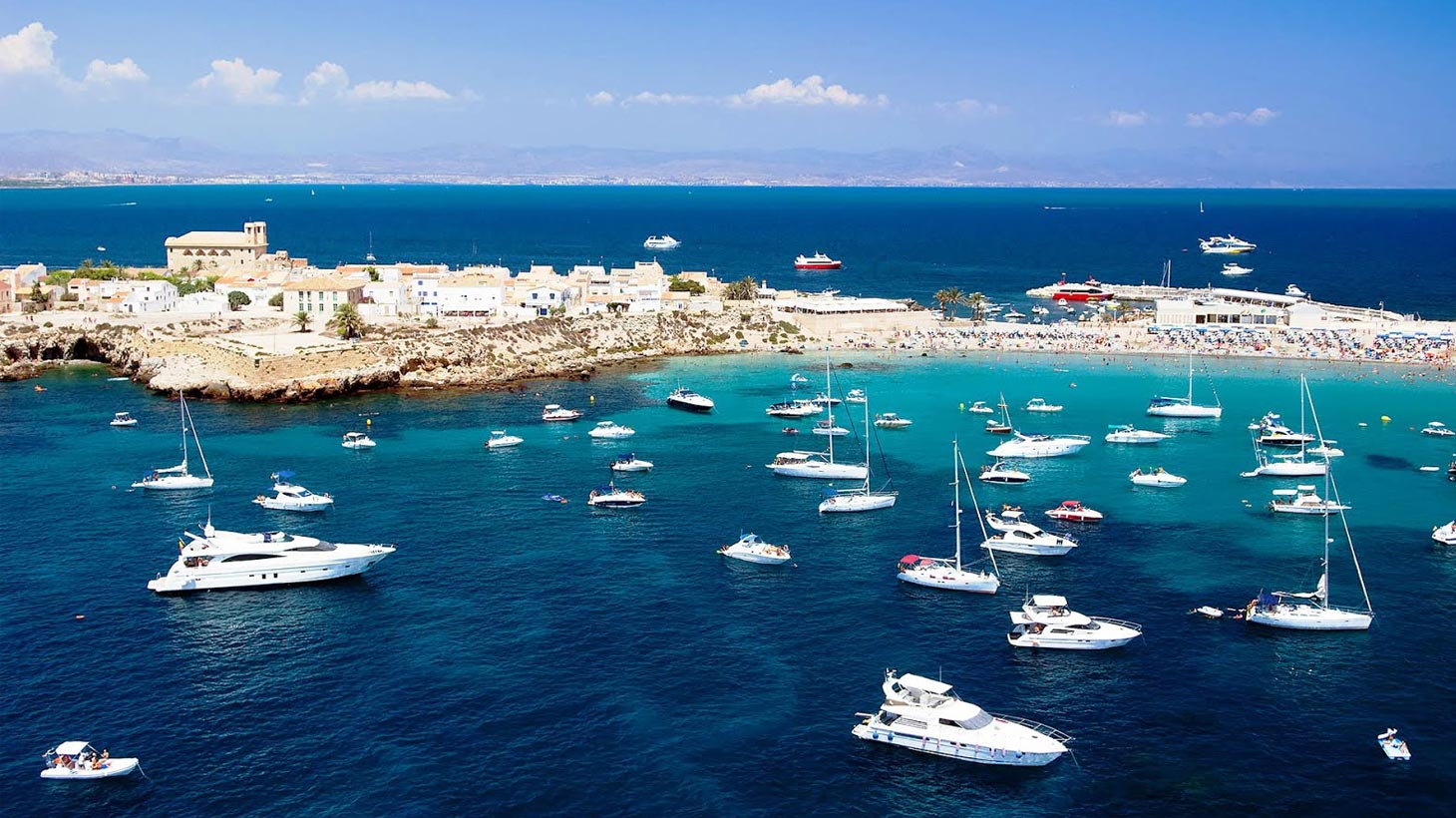
The 999 Essential Nautical Terms
All the Nautical Terms Every Captain Should Know
Maritime terms are special due to their historical origins and unique nature within the context of navigation and the sea. These terms have a …

If you're interested in delving into the fascinating world of navigation, it's essential to start with the basics. In our Beginner Level of nautical terms, we provide you with the opportunity to familiarize yourself with fundamental vocabulary and essential concepts to begin your maritime journey.
In this level of nautical terms, we will delve into the basic and fundamental concepts of navigation. We will explore the most common words and expressions used in the maritime domain, which will help you become acquainted with the environment and activities related to navigation. If you are new to the nautical world, this level will provide you with a solid foundation to understand and enjoy this exciting discipline.
Get ready to dive into the fascinating world of navigation and acquire the basic knowledge needed to embark on your maritime adventures. With our guide in the Beginner Level of nautical terms, you'll be on your way to confidence and safety at sea. You'll appreciate knowing most of these terms when renting a boat or going sailing with friends. Don't miss this opportunity to explore a new horizon and take your first steps on this exciting journey!
- ABANDONMENT: Abandonment of the boat. The last resort in case of danger. "THE BOAT WILL ONLY BE ABANDONED WHEN IT OFFERS LESS PROTECTION THAN ANY OTHER MEANS OF SURVIVAL, AND NEVER, IF POSSIBLE, WITHOUT ISSUING A DISTRESS MESSAGE AND TAKING BASIC ABANDONMENT PREPARATORY MEASURES."
- ADRIFT: Situation in which a boat floats without control, at the mercy of the wind and currents.
- AFT: In the aft direction of the boat, or behind it.
- AHEAD: Ahead. To have or take momentum in the natural direction of travel.
- ALLEYWAY: It is the plane that divides the boat from bow to stern into two symmetrical halves.
- ANCHOR: A heavy object, attached to the boat by a chain, used to anchor it to the seabed.
- ANCHOR LINE: It consists of the anchor, the length of chain connected to the anchor by a shackle, and the length of rope or cable attached to the chain. The length of the anchor line should not be less than five times the boat's length overall.
- ANCHOR WELL: Compartment located at the bow where the anchor and the anchor chain are stored.
- ANCHORAGE: Suitable place for anchoring a boat. Area of a port designated for the anchoring of vessels.
- ANCHORING: Maneuver in which the anchor and sufficient chain are released for the boat to remain stationary in a specific area. Once anchored, and due to wind and waves, the boat will swing around the anchor in what is known as a swinging circle.
- BATHTUB: The exterior space of the hull intended for the crew, where the tiller or steering wheel is usually located, and from which the mainsheet and genoa sheets can be operated.
- BAY: A large inlet of the sea on the coast, shallow and wide. It can provide shelter for vessels.
- BEACH: Seashore or the bank of a large river, consisting of sandy areas on a nearly flat surface.
- BEAM: Maximum width of a ship, measured from one side to the other.
- BEAM: Direction perpendicular to the side of the boat. Sailing across the wind: Navigating with the wind coming from the beam, i.e., perpendicular to the bow-stern line of the boat.
- BILGE: Lower cavity of the boat, located above the keel, where waters from different sources that filter through the sides and deck of the boat are collected and then expelled by the pumps.
- BIMINI TOP: Awning used on boats to protect the crew from the sun.
- BOARDING: Collision between two boats. While navigating, always maintain effective visual and auditory vigilance and be prepared at all times to perform an evasive maneuver.
- BOAT: A concave structure made of wood, iron, or other material, capable of floating in water and used as a means of transportation. According to the legislation, a boat is understood to be any floating object with a minimum length of 2.5 meters, with no maximum limit.
- BOAT HOOK: Long pole with a hook-shaped end primarily used to assist in docking and undocking. It can also be used to retrieve floating objects such as buoys or handle the guide rope of the dead in ports without getting one's hands dirty.
- BOAT IN SIGHT: A nautical term used to alert the rest of the crew that we have a boat in our visual range.
- BOLLARD: Cast iron or steel post, pile, or bollard with a curved upper end, placed on the outer sides of docks, used to secure the mooring lines of boats when berthing.
- BOW: The side of the boat from the port or starboard side, extending from amidships to the bow. It includes the most curved areas of the bow.
- BOW: Front part of the ship.
- BOW INTO THE WIND: Maneuver that involves turning the bow of the ship into the wind. In addition to being recommended to initiate the anchoring maneuver, in sailboats, it is a necessary preliminary maneuver to: 1. Hoist the mainsail (unless it is furlable, in which case it is not necessary but advisable) 2. Stop the boat. In the case of rough seas, it is better not to take the waves directly head-on to avoid pounding.
- BUOY: A fixed or floating signal used to indicate the margins and axes of navigable channels, hazards, landing points, and other points of interest to navigators.
- BUOY: Floating body attached to the bottom of the sea, a lake, a river, etc., placed as a signal, especially to indicate a dangerous location or a submerged object.
- BUOYANCY: Ability to float based on the principle of Archimedes.
- CAPTAIN: The person with the highest responsibility and in command of the boat.
- CATAMARAN: Boat consisting of two twin hulls joined by their sides.
- CLEAT: Metal or wooden piece, curved at its ends and secured at its midpoint, used to secure ropes.
- CLOTHESLINE: A place or location where there is suitable bottom for anchoring and securing boats. This is why the term "fondeadero" is sometimes used interchangeably with "tenedero."
- COASTAL NAVIGATION: Navigation conducted close to the coast, guided by its configuration (coastal navigation).
- COASTLINE: Belonging or relating to the coast. Fishing season for a species.
- COLLISION: Collision. The impact of one boat with another.
- COURSE: Each of the divisions of the compass rose. Technically speaking, "rumbo" is the angle formed by the bow-stern line of our boat and the north. It refers to the direction of the vessel, tide, current, or any other object. When referring to a vessel, it can also be called "derrota," which is the direction the vessel wishes to navigate.
- COVE: The curvature formed by the rope when it is slack or when a knot is tied. A simple loop given to a rope.
- CREW: People on board a vessel dedicated to its handling or service.
- DANFORTH (TYPE OF ANCHOR): It is a type of flat anchor with a lot of grip and little weight, but large dimensions. Its design consists of two long plate-shaped flukes that dig into the bottom and provide a good hold. This type of anchor is especially recommended for seabeds with mud, sand, or silt.
- DEAD: Heavy block of cement or anchor deposited on the seabed, connected to the surface by a buoy rope, allowing a ship to anchor. Normally, when docking in marinas, the sailor will pass us the dead guide. By tensioning this guide and making it taut at the bow or stern (depending on whether we have entered the stern or bow docking position, respectively), we will keep the boat properly positioned in its mooring, without longitudinal movement.
- DECK: Structure that covers the entire hull of a vessel.
- DINGHY: Small boat maneuvered with oars.
- DOCK: Structure built on the shore of the sea or a navigable river, used to facilitate the boarding and disembarking of people and goods, and for mooring vessels.
- DOCKING: The maneuver of docking a boat. The point or berth where the boat is docked.
- DRAFT: Vertical distance from the keel of the boat to the waterline.
- EAST WIND: East wind.
- ESTIMATED TIME OF ARRIVAL: Estimated Time of Arrival at a destination point while maintaining current course and speed. It is a concept widely used in marine electronics (plotters and GPS).
- FALL ON DECK: The impact of the hull on the water when it collides with waves while pitching after surpassing a large wave.
- FENDERS: Pieces, typically made of rubber, placed on the sides of the boat to protect it from rubbing against docks during docking or when other vessels dock alongside.
- FIN: The side of the boat from the port or starboard side, extending from amidships to the stern.
- FLAG: Flag flown by ships at sea that determines their nationality, i.e., the flag's corresponding state exercises its authority and jurisdiction over the ship in all technical, social, and administrative aspects.
- FLARE: A pyrotechnic device that produces a red or orange light and is used to request assistance from the sea. It is part of the safety equipment of any boat.
- FLOATING DOCK: Floating dock or gangway that provides access to moored vessels.
- GUNWALE: It is the bulwark that surrounds the main deck of a boat and constitutes the highest part of the hull.
- HATCH: Circular hole on the deck through which the chain and mooring lines emerge.
- HATCH: Openings found in the hull of the boat, typically used to store accessories needed for navigation. They are also called "tambuchos," which are the openings through which people access the spaces inside the boat.
- HOLD: Spaces on a boat designated for the stowage of cargo it carries. Their location, design, division, etc., are based on the specific characteristics of the cargo or the type of traffic for which the boat is intended.
- HORIZON: Apparent intersection between the sea (or land) and the sky as seen by an observer. Also known as the apparent horizon.
- HULL: The structural body of the boat, excluding the cabin, mast, rigging, or keel.
- HULL SIDE: Each side of the hull, from bow to stern.
- KNOT: Tying or fastening made with ropes. Unit of speed equivalent to one nautical mile per hour.
- LEAK: An opening in the hull through which water enters.
- LEEWARD: The part opposite to the direction from which the wind comes, with respect to a specific point or location, as observed by an observer.
- LENGTH OVERALL: Length of the boat from bow to stern.
- LIFELINE: A strong fabric strap with a carabiner at each end. It is used by attaching one carabiner to our harness and the other to a fixed point on the deck or the lifeline. This allows us to move safely on the deck in rough sea conditions.
- MAN OVERBOARD: Alarm signal given when a person falls into the water. Maneuver carried out to recover a person who has fallen overboard.
- MOORED: Refers to a boat when it is in its mooring.
- MOORING: The area in the harbor where a boat is parked, securing it with mooring lines to the dock.
- NAUTICAL MILE: Length of one arc minute of a meridian. Equivalent to 1.852 meters. This figure is obtained by dividing the Earth's diameter (approximately 40,000,000 meters) by the product of multiplying 360 degrees by 60 minutes per degree. (40,000,000 / 360*60) = (40,000,000 / 21,600) = 1,851.85 meters.
- OAR: Cylinder-shaped wooden piece, partly rounded and flat at one end, used as a means of propulsion in boats.
- OCEAN: The ocean refers to the part of the Earth's surface occupied by seawater. The ocean is divided into five parts by large land masses: the Atlantic Ocean, the Pacific Ocean, the Indian Ocean, the Arctic Ocean, and the Antarctic Ocean.
- OFFSHORE: They are the mooring lines that lead from the bow or stern and work towards the bow or stern, respectively.
- ON BOARD: Inside or within a boat.
- PAINTER (ROPE USED TO SECURE A DINGHY): Describes an anchor suspended above or below the water's surface, "anchor a-cockbill."
- PENINSULA: Land surrounded by water, connected and in communication with a larger landmass only through a relatively narrow area.
- PIER: Small dock for disembarking personnel or supplies.
- PITCHING: The movement of the boat around its transverse axis, consisting of alternate rising and falling of the bow and stern due to bow waves.
- PORT: Safe place on the coast, sheltered from the wind and the sea, with anchorage for boats and vessels.
- PORT (LEFT SIDE OF A VESSEL): The port or left side of the boat when facing forward. It is illuminated with a red light.
- PORT OF CALL: Port where we moor our boat for a period of time, resuming navigation later. Any ladder on the boat.
- POSIDONIA (A TYPE OF SEAGRASS): The "Posidonia oceanica" is an endemic plant in the Mediterranean with roots, stems, leaves, and fruits that live underwater between the surface and a maximum depth of about forty meters, always on sandy bottoms.
- PROPELLER: Set of two or more helical blades that, when coupled to the shaft, rotate in the same direction as the shaft, producing a reaction force that moves the boat. Depending on its rotation, the propeller can be right-handed or left-handed.
- ROLLING: The typical movement of a boat around its longitudinal axis, consisting of leaning alternately to one side or the other due to the waves.
- ROPE: A tongue of land that juts into the sea. Any of the ropes used on board a boat. The term "rope" is not used at sea. As sailors say, "The only rope on a boat is the one on the clock." The parts of a rope are the standing part, the bight, and the end. Ropes receive different names according to their thickness: Hawser: 100 mm Hawser-laid rope and hawser: between 100 and 50 mm Cable: between 50 and 30 mm Rope: between 30 and 15 mm Line: between 15 and 8 mm Cord or small stuff: between 8 and 2 mm Thread or fishing line: less than 2 mm.
- SAFETY LINE: Safety device for rough weather situations, consisting of two flat nylon straps mounted on the boat's deck from bow to stern, one on each side. They must be attached to strong anchoring points. Once installed, we can move safely on the deck by tying our harness to the lifeline using a safety line with two carabiners.
- SAIL: It refers to any surface that, vertically positioned to the wind and shaped like a wing, generates lift. Depending on the angle at which the wind strikes the surface of the sail, one side will have higher air pressure than the other, according to Bernoulli's principle. This pressure difference creates a force that pushes the sail towards the side with lower pressure. Triangular sails consist of three parts: luff, foot, and leech. If we compare a sail to a triangle, the leech and foot would be the legs, while the luff would be the hypotenuse.
- SECURE: The longest or main part of a rope, the part that is secured.
- SHELTER: Sheltered area from waves, wind, and current, where a vessel can easily take refuge and allow the occupants to reach the shore.
- SHIPOWNER: A natural or legal person who owns the boat and is therefore responsible for it.
- SHIPYARD: The place where boats are built and repaired.
- SIDE: Refers to each of the lateral sides of the boat. Port side / Starboard side.
- STARBOARD (RIGHT SIDE OF A VESSEL): Starboard or right side of the boat when facing forward from the stern. It is illuminated with a green light.
- START-UP: The speed acquired by the boat. Gaining momentum means increasing speed, while losing momentum means reducing it.
- STEADY SPEED: The minimum speed required for a boat to maintain control.
- STERN: Rear part of the ship.
- SUPERSTRUCTURE: Part of a ship's hull that remains above water permanently when the ship is fully loaded.
- TACK (NAUTICAL MANEUVER): The action and effect of tacking. Changing course or tack by passing from one tack to another so that, after the maneuver, the wind comes from the opposite side it was coming from before, with the wind initially coming from the beam.
- TAIL END OF A ROPE: Term used to designate the free end of a rope or cable. A rope has two ends.
- TO ABANDON: Abandoning the boat using lifeboats, jumping ashore, transferring to another boat, or by any other means.
- TO ANCHOR: To drop the anchor, to anchor.
- TO ANCHOR: The anchoring maneuver consists of dropping the anchor and its chain to the seabed in a way that the boat remains still and secure.
- TO BELAY: To gradually lower a rope, cable, or chain that is in use.
- TO COAST ALONG: To navigate along the coast, keeping it in sight.
- TO DOCK: The action of securing the boat to a dock. To approach a dock, boat, or pier to stay alongside it.
- TO DRAG ANCHOR: When a boat that is anchored drags its anchor due to the force of the wind or current without it gripping the bottom properly.
- TO EMBARK: To embark people or goods onto a vessel.
- TO HOIST: To raise or lift an object by pulling on the suspended rope.
- TO MARK BUOYS: Circular motions that a boat performs around its anchor while being anchored, typically caused by gusts of wind or tides.
- TO MOOR: To tie, secure, or knot a line. Position a boat in its place next to the dock or pontoon and secure it with lines.
- TO RAISE: To raise or retrieve the submerged anchor by lifting it and bringing it back to the vessel.
- TO RELEASE: To release or completely free a rope that was secured.
- TO ROW: Moving a boat forward using oars.
- TO STEER: To steer a boat and control its direction with the rudder.
- TO STOW: Neatly arranging loose items to occupy the least amount of space possible. Distributing and stowing the cargo of a boat in a way that occupies the least amount of space and remains immobilized.
- UNDERWATER HULL: Part of the ship that is submerged.
- WAKE: Trail left by a boat while sailing.
- WATERLINE: It is the imaginary line that separates the submerged part of the boat's hull (underwater hull) from the part that is floating (above-water hull). When applying anti-fouling paint to the hull, it is crucial for it to coincide with the waterline.
- WAVE: Elevation of the water's surface, agitated by the wind or another cause, characterized by wave motion, apparent translational motion, and true rotational motion.
- WEST WIND: West wind.
- WINDLASS: Mechanical device shaped like a drum with an internal ratchet mechanism that facilitates the hauling of ropes or chains.
- WINDWARD: The direction from which the wind is coming with respect to a specific point or location, i.e., the part facing the wind.
We hope you have enjoyed and learned with us. Stay tuned for the next installment, Intermediate Level Terms.

Maritime terms are special due to their historical origins and unique nature within the context of navigation and the sea. These terms have a …

Are you thinking of organizing a boat trip with friends or family? It's a great idea! But before embarking on this adventure, it's important …

THE ANCHORING
Anchoring is one of the most important maneuvers we must perform on board the boat during our navigation day. During the day, …